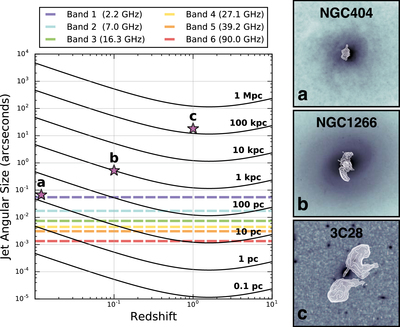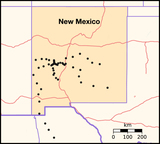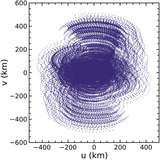Image Details

Caption: Figure 9.
Observed jet angular size as a function of redshift. The black solid lines trace the redshift dependence of the angular extent of a jetted AGN for intrinsic jet sizes (measured from end to end along the major axis of the radio source) ranging from 0.1 pc to 1 Mpc. The maximum angular resolution of the ngVLA (estimated by λ/Bmax, where we assume Bmax = 500 km) at the center of each of the ngVLA bands as defined in Selina & Murphy (2017) is denoted by the dashed colored lines. The magenta stars highlight the position on the diagram of three representative cases based on the sources for which simulations were performed in Section 3: (a) the dwarf galaxy NGC 404 with a jet extent of 10 pc, (b) the jet-driven feedback host NGC 1266 with a jet extent of 1 kpc, and (c) the radio galaxy 3C28 with a jet extent of 150 kpc. The redshifts of the representative sources correspond to those of the simulated ngVLA maps at z ≈ 0 (D = 10 Mpc), z = 0.2, and z = 1.0, respectively. The thumbnails shown to the right of the main figure illustrate the radio morphologies of the three representative sources at their true redshifts and are described in detail in the far-left panels of Figures 6–8.
Copyright and Terms & Conditions
© 2018. The American Astronomical Society. All rights reserved.











